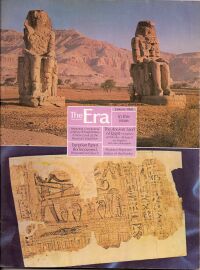
FAIR is a non-profit organization dedicated to providing well-documented answers to criticisms of the doctrine, practice, and history of The Church of Jesus Christ of Latter-day Saints.
| Answers portal |
| The Book of Abraham |
 |
|
FAQ:
Book of Abraham content: Production: |
|
The Book of Abraham states that “the sun [is said] to borrow its light from Kolob through the medium of Kae-e-vanrash, which is the grand Key, or, in other words, the governing power (Abraham Fac 2,Fig 5),” while astrophysics has shown that “The Sun shines ... because of thermonuclear fusion. It does not get its light from any other star.”
To see citations to the critical sources for these claims, click here
These verses from Abraham admit a variety of interpretations. The suggestion that Abraham must have taught that the photons leaving the surface of the sun originally came from Kolob is completely unjustified.
There are many scriptures or statements by the prophets that seem to have scientific implications. Unfortunately, they are never couched in modern scientific terms and their meanings are often very obscure. So it is hard to decide who is more foolish — the faithful saint, who interprets them in a way that forces them into agreement with some current view of science, or the faithless critic, who purposely interprets them in a way that is most at odds with current scientific thought. The Book of Abraham quote cited in the criticism above has inspired both kinds of nonsense, including the interpretation found on the web site where this criticism appeared. The wording of Joseph Smith’s explanation of Figure 5 in Facsimile 2 of the Book of Abraham is, in fact, very difficult to interpret. Let’s see what some of our options are.
And, finally, what are we to understand about the nature of Book of Abraham astronomy? Is it a revelation from God to Abraham explaining the structure of the universe as it would be seen by the astronomers of our day? Or should we remember that “The Lord said unto me: Abraham, I show these things unto thee before ye go into Egypt, that ye may declare all these words.” Abraham 3:15, so that, as John Gee has suggested [1], this is simply the teaching that would be easiest for the Egyptians to understand — one that would teach them that Elohim, who dwells near Kolob, rules over than the sun-god, Amen-Re?
Until someone can make a convincing case that their interpretation of these things is the only reasonable one, any faith-promoting proof from Abraham’s astronomy is a flimsy house of cards and any faith-destroying attack on some straw-man interpretation is misguided. Among the misguided interpretations is the unjustified suggestion that Abraham taught that the photons leaving the surface of the sun originally came from Kolob.

FAIR is a non-profit organization dedicated to providing well-documented answers to criticisms of the doctrine, practice, and history of The Church of Jesus Christ of Latter-day Saints.
We are a volunteer organization. We invite you to give back.
Donate Now